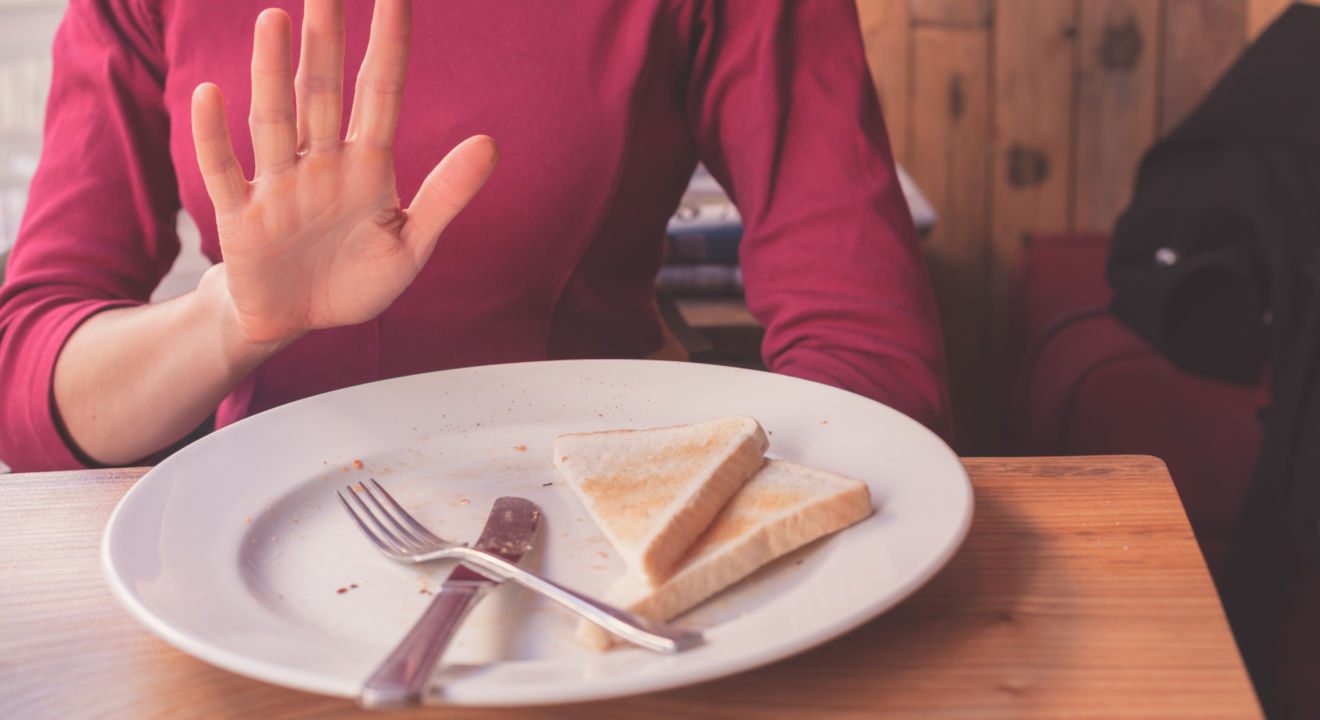Culture August 5, 2016


I discovered the gluten-free diet differently from most Americans. I didn’t read about it in a celebrity tabloid, hear about its astonishing weight loss effects from a friend or try a gluten-free restaurant dish because it’s “trendy.”
I learned about gluten when I weighed 83 lbs at 5’3” – as a freshman in college. After months of constant acid reflux, bloating and lack of appetite, my doctor diagnosed me with celiac disease (an autoimmune condition in which ingesting gluten damages the intestines.) The cure? A gluten-free diet – which, according to Gallup, 1 in 5 Americans currently follows.
Considering that only one percent of Americans have celiac disease, people must believe gluten-free foods have a positive effect on their bodies. There is much to digest about gluten-free food, Entity is here to separate (foodie) fact from fiction.
I’ve received plenty of memorable reactions when first telling people that I’m gluten-free. One statement that sticks out in my mind, though, occurred the first week of my freshman year of college. Consider that, at that time, I wasn’t just skinny – I was a skeleton. Yet, when I told a gorgeous blonde that I needed to eat gluten-free because of celiac disease, she looked at me and said, “I wish I had celiac so I could be skinny like you.”
According to the online Merriam-Webster Dictionary, the word “diet” has multiple meanings. For instance, it can mean “a food and drink regularly provided or consumed” or a “regimen of eating and drinking sparingly so as to reduce one’s weight.” In other words, gluten-free can be the way that you eat, but not necessarily the way you lose weight. Don’t assume that someone following a “diet” wants to or succeeded at losing weight – as in my case, they may just want to stay alive.
People also often think that eating gluten-free just means “taking the bread off” your sandwich. Carbs aren’t the problem for celiacs, however. Instead, as Mayo Clinic explains, celiacs can’t consume the protein gluten found in grains such as wheat, rye, and barley. If I like, I can eat a big, carb-filled sandwich on gluten-free bread for lunch. If you like, you can go on a no-carb or low-carb without “gluten” ever crossing your mind.
The fact is that most of the “astonishing” benefits the gluten-free diet supposedly provides occurs in people eating naturally gluten-free foods (e.g. rice, fruits and vegetables), rather than processed substitutes. You’ve probably heard the advice to shop the outer aisles of the grocery store to eat the healthiest. Websites like Web MD keep repeating this tip because outer aisles usually contain vegetables, fruits, dairy and meats. These are all whole foods … which also happen to be gluten-free. Gluten-free foods don’t only include the pricy “special” pizzas at your local supermarket; they also feature the same baked potatoes you’ve been eating since childhood.
Don’t believe that all gluten-free foods are easily identifiable. So far, the weirdest food-related item that I learned contained gluten is a set of “environmentally friendly” paper plates at my grocery store … made with wheat instead of trees.
Gluten can be just as tricky hiding in food. A few of the surprisingly gluten-filled foods? Most soy sauces, alcohol, oats, salad dressings, deli meats and even communion wafers (“Oh my God” is right!). Generally, going gluten-free isn’t low maintenance, nor is it low-carb.
Here’s a fun fact about celiac disease: if I ingest even a crumb of gluten, I get sick. If someone uses a cutting board, dishes or utensils that touched gluten to make my gluten-free meal, I get sick. Since celiacs like me are sensitive to cross-contamination, some products that claim to be “gluten-free” aren’t actually safe for us to eat. Certain pizza restaurants, for instance, might offer gluten-free crusts – but if they cook it in the same oven and prepare it in a kitchen with wheat flour flying in the air, my stomach will feel like it’s been sliced with a pizza cutter.
Imagine you’re a chef baking your mom’s favorite bread recipe, but you want to nix the gluten. The problem? You need to put something in its place – usually extra sugar, fat, and calories, according to Consumer Reports. Not only that, but gluten-free products often lack key nutrients, such as folic acid and iron, compared to their fortified whole wheat counterparts. Personally, I thrive on a gluten-free diet, but only because my body can’t biologically process gluten.
My (totally non-medically qualified) advice to you? Find which diet (preferably in the first meaning of the word) your body thrives on and know that, while eating gluten-free saves celiacs’ lives, gluten-free foods aren’t the best foods for everyone.
Now that’s a diet story worth sharing.